Don't wanna be here? Send us removal request.
Text
"Your One-Stop Digital Marketing Partner: Comprehensive Solutions for Every Business"
Empowering Your Business with Comprehensive Digital Marketing Services
In today’s digital-first world, having a strong online presence is no longer optional—it’s essential. Businesses of all sizes, from startups to global enterprises, are leveraging the power of digital marketing to connect with their audiences, drive growth, and stay ahead of the competition. At our digital marketing agency, we understand the unique challenges and opportunities that come with this dynamic space. That’s why we offer a full spectrum of marketing services tailored to meet your business needs and goals.
Why Choose a Full-Service Digital Marketing Agency?
The digital landscape is vast and constantly evolving. From search engines to social media platforms, there are countless channels to reach your target audience. However, navigating these waters requires expertise, strategy, and a holistic approach. That’s where a full-service agency comes in. By partnering with us, you gain access to:
Integrated Strategies: We align all marketing efforts to ensure consistency and maximize impact across channels.
Expertise in Every Area: From SEO and content marketing to paid ads and analytics, our specialists have you covered.
Time and Cost Efficiency: With all your marketing needs managed under one roof, you save time and resources.
Our Comprehensive Digital Marketing Services
Here’s a closer look at the services we provide to help your business thrive:
1. Search Engine Optimization (SEO)
Visibility is key in the digital world. Our SEO experts optimize your website to rank higher on search engine results pages (SERPs), driving organic traffic and boosting your online authority.
2. Pay-Per-Click (PPC) Advertising
Need immediate results? Our PPC campaigns deliver targeted traffic and high ROI by placing your ads in front of the right audience at the right time.
3. Social Media Marketing
Engage, inspire, and grow your audience on platforms like Facebook, Instagram, LinkedIn, and Twitter. We create data-driven strategies and captivating content to amplify your brand’s voice.
4. Content Marketing
Content is king, and we’re the crown jewelers. From blog posts to videos, we craft compelling content that educates, entertains, and converts your audience.
5. Email Marketing
Stay connected with your customers through personalized and impactful email campaigns. We design, execute, and optimize emails that drive engagement and sales.
6. Web Design and Development
Your website is the digital storefront of your business. Our team creates stunning, user-friendly websites that not only look great but also drive results.
7. Analytics and Reporting
Data drives decisions. We provide detailed analytics and insights to measure the success of your campaigns and refine strategies for even better results.
How We Make a Difference
At our agency, we’re not just marketers—we’re your growth partners. We take the time to understand your business, industry, and goals to craft personalized strategies that deliver measurable outcomes. Our team stays ahead of trends, using the latest tools and technologies to ensure your brand remains competitive and relevant.
Let’s Grow Together
The digital world is full of opportunities, and we’re here to help you seize them. Whether you’re looking to build brand awareness, generate leads, or increase sales, our comprehensive digital marketing services are designed to meet your unique needs. Let’s work together to turn your vision into reality.
Contact us today to learn more about how we can take your digital marketing efforts to the next level!
0 notes
Text
How to Grow Your Business with the Help of Digital Marketing
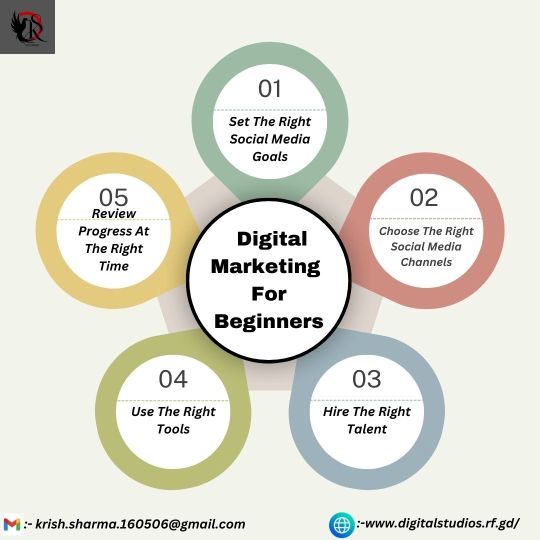
Grow Your Business Using Digital Marketing
In a scenario where everyone's world is moving swiftly with the digital revolution, leveraging digital marketing is the only way to grow your business. When you've just started a small business or are an old establishment, digital marketing can help grow your business by taking it to a wider audience, ensuring more engagements, and making it sell more. Learn how you can harness digital marketing for your business growth here.
1. Develop a Strong Online Presence
Your website is often the first contact point for a customer, so make sure it is user-friendly, mobile-responsive, and SEO-optimized. An organized website with content will most certainly be sought out and bring in organic traffic.
2. Use Social Media Channels
An ideal social medium which is not mentioned is the powerful Facebook, Instagram, LinkedIn, and Twitter others are the means of communication with your target audience uncomixmes to revolving around social Medias which are considered as uncamonademand to work together without unity is really name it them useenables to. Develop some stuff that will attract the right audience.
3. Develop Content Marketing
Quality content truly is the way to be an expert in your field.. Blogging, creating videos, or podcasts are fantastic ideas to provide useful insights towards your audience. No, not to just boost your SEO, but to make your brand the authority, the one that your audience turns to.
4. Email Marketing
E-mail marketing is one of the most effective forms of digital marketing. Create your mailing list and start sending a regular newsletter full of promotions, updates, and good content. Personalization can work miracles for engagement and conversion rates.
5. Go through Paid Advertising
You can even use those same ones to target those ads to specific placements on Google Ads and those networks.. PPC's though because you can target specific ones to audiences and you get the traffic you need on your site right when you want it simply because you "push" it right then.. Never forget to measure and track how your ad is performing to maximize return on investment.
6. Analyze and Adapt
Leverage analytics tools for monitoring your marketing endeavors. The website traffic, conversion rates, and other metrics from social media engagement can be of great help when peering into what works and what doesn't.
Periodic adjustments based on data ensure continuous growth.
7. Engage in Online Communities
Engagements in forums or online communities based on your industry will increase your visibility and credibility. Share what you know, and be a regular contributor, positioning your brand as the thought leader within your realm of expertise.
Conclusion
Digital marketing is a pretty strong outlet for the change of your business. On the company's online presence, content value, and interactions with your audience should be focused on for long-term growth and success. All the risks and challenges may be worth embracing the digital world.
for more details visit:-http://digitalstudios.rf.gd/
mail id:- [email protected]
#digital marketing#digital marketing 2023#learn digital marketing#digital marketing basics#digital marketing course#what is digital marketing#digital marketing tutorial#digital marketing examples#digital marketing training#digital marketing explained#simplilearn digital marketing#digital marketing in 5 minutes#digital marketing explainer video#online marketing#internet marketing#digital marketing tutorial for beginners#marketing 4.0
0 notes
Text
"Digital Marketing Basics for Beginners"

Digital marketing is an essential skill for anyone looking to promote a brand or business online. It encompasses a variety of strategies and channels designed to connect with target audiences effectively. For beginners, understanding the key components is crucial.
Core Elements:
Search Engine Optimization (SEO): This involves optimizing your website to rank higher in search engine results, driving organic traffic.
Content Marketing: Creating valuable content—such as blogs, videos, and infographics—helps engage your audience and build trust.
Social Media Marketing: Utilizing platforms like Facebook, Instagram, and LinkedIn allows you to connect with potential customers through engaging posts and targeted ads.
Email Marketing: Directly communicating with your audience via newsletters and promotional emails fosters relationships and drives conversions.
Pay-Per-Click (PPC) Advertising: This model lets you pay for ads that appear on search engines and social media, generating immediate traffic.
Analytics: Tracking and analyzing data helps you understand user behavior, allowing for informed adjustments to your strategy.
Starting with clear goals and a structured plan, beginners can explore these digital marketing avenues to effectively reach and engage their audiences in today's competitive online landscape.
#digital marketing#digital marketing 2023#learn digital marketing#digital marketing basics#digital marketing course#what is digital marketing#digital marketing tutorial#digital marketing examples#digital marketing training#digital marketing explained#simplilearn digital marketing#digital marketing in 5 minutes#digital marketing explainer video#online marketing#internet marketing#digital marketing tutorial for beginners#marketing 4.0#simplilearn
0 notes
Text
Digital marketing refers to the use of digital channels, platforms, and technologies to promote products, services, or brands to reach and engage with consumers. It encompasses a wide range of tactics including social media marketing, email marketing, search engine optimization (SEO), pay-per-click (PPC) advertising, content marketing, and more. The key advantage of digital marketing is its ability to target specific audiences, track results in real-time, and optimize campaigns based on data-driven insights, allowing businesses to reach their marketing goals more effectively in today's digital age.
0 notes
Text
photo editing course
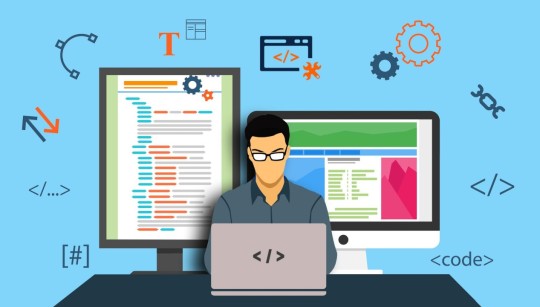
Photo editing involves the manipulation and enhancement of digital images to improve their quality, appearance, and visual appeal. It encompasses a wide range of techniques and tools used to modify photographs for various purposes, such as artistic expression, professional photography, digital marketing, and personal use. Here's a detailed description of photo editing:
Editing Process:
Importing Images: The editing process begins with importing digital images into photo editing software. These images may come from digital cameras, smartphones, scanners, or stock photo libraries.
Basic Adjustments: Basic adjustments are made to correct common issues such as exposure, brightness, contrast, and color balance. This may involve adjusting sliders or using auto-correction tools to improve overall image quality.
Crop and Composition: Photo editors may crop or resize images to improve composition, remove unwanted elements, or focus attention on the main subject. They may also straighten horizons, adjust perspective, or apply framing techniques to enhance visual impact.
Retouching and Restoration: Retouching involves removing imperfections, blemishes, or distractions from the image. This includes techniques such as spot healing, clone stamping, and content-aware fill to repair damaged areas or enhance the appearance of subjects.
Color Correction and Grading: Color correction is used to adjust the color tone, saturation, and hue of an image to achieve a desired look or mood. Color grading involves applying creative color adjustments to evoke emotions or convey a specific aesthetic.
Enhancement and Effects: Photo editors may apply various enhancements and effects to add artistic flair or style to an image. This includes sharpening details, adding blur for depth of field, applying filters or presets, and experimenting with creative techniques like HDR (High Dynamic Range) or black and white conversion.
Adding Elements and Text: In some cases, photo editing may involve adding graphical elements, text overlays, or digital artwork to the image. This can be used for branding, marketing, or creative expression.
Saving and Exporting: Once editing is complete, the edited image is saved in a preferred file format (e.g., JPEG, PNG, TIFF) and resolution. It can then be exported for various purposes such as printing, sharing on social media, or publishing on websites.
Tools and Software:
Photo editing can be performed using a variety of software tools, ranging from basic editing programs like Adobe Photoshop Express and Pixlr to professional-grade software such as Adobe Photoshop, Adobe Lightroom, GIMP, and Affinity Photo. Each tool offers its own set of features, capabilities, and learning curves to suit different editing needs and skill levels.
Applications of Photo Editing:
Photo editing is widely used in various fields and industries, including:
Professional photography and photojournalism
Graphic design and advertising
E-commerce and product photography
Social media content creation
Digital marketing and branding
Personal photography projects (e.g., family photos, travel photos)
Overall, photo editing is a versatile and creative process that allows photographers, designers, marketers, and enthusiasts to enhance and transform digital images to achieve their desired visual outcomes.
0 notes
Text
tally

ChatGPT
Tally is a popular accounting software used by businesses to manage financial transactions, accounts, and other related activities. Here's a comprehensive description of Tally:
Features and Functionality:
Bookkeeping: Tally facilitates the recording of financial transactions such as sales, purchases, receipts, payments, and journal entries. It maintains a comprehensive ledger of accounts to track income, expenses, assets, liabilities, and equity.
Inventory Management: Tally allows businesses to manage their inventory efficiently by tracking stock levels, purchases, sales, and returns. It provides tools for inventory valuation, stock reconciliation, batch tracking, and managing multiple warehouses.
Accounts Receivable and Payable: Tally enables businesses to manage accounts receivable (money owed by customers) and accounts payable (money owed to suppliers). It generates invoices, tracks payments, and sends reminders for overdue payments.
Banking: Tally integrates with bank accounts to facilitate electronic funds transfer, bank reconciliation, and cash management. It supports multiple bank accounts and currencies, enabling businesses to manage transactions across different accounts and currencies.
Financial Reporting: Tally offers a wide range of financial reports and statements to provide insights into the financial health and performance of the business. These include balance sheets, profit and loss statements, cash flow statements, trial balances, and aging reports.
Tax Compliance: Tally helps businesses comply with tax regulations by providing features for calculating and recording various taxes such as GST (Goods and Services Tax), VAT (Value Added Tax), excise duty, and income tax. It generates tax reports and facilitates online tax filing.
Data Security and Backup: Tally ensures the security of financial data through user authentication, access controls, and encryption. It also offers backup and restore functionality to prevent data loss in case of hardware failure or system crashes.
Customization and Integration: Tally can be customized to suit the specific needs of different businesses through add-ons, plugins, and customizations. It also integrates with other software applications such as CRM (Customer Relationship Management) systems, ERP (Enterprise Resource Planning) solutions, and e-commerce platforms.
User Interface:
Tally features a user-friendly interface with menus, buttons, and shortcuts for easy navigation and operation. It provides a clear and organized view of financial data, transactions, and reports, making it accessible to users with varying levels of accounting knowledge.
Versions and Licensing:
Tally is available in different versions tailored to the needs of small businesses, medium-sized enterprises, and large corporations. It offers both perpetual licensing and subscription-based pricing models, allowing businesses to choose the option that best suits their budget and requirements.
Training and Support:
Tally provides training resources, documentation, and support services to help users learn how to use the software effectively. This includes online tutorials, user manuals, video guides, forums, and customer support channels for assistance with technical issues and troubleshooting.
Overall, Tally is a comprehensive accounting software solution that simplifies financial management, improves accuracy, and enhances productivity for businesses of all sizes.
0 notes
Text
video editing

ChatGPT
Video editing is the process of manipulating and rearranging video footage to create a cohesive and engaging visual narrative. It involves combining video clips, adding special effects, transitions, audio, and other elements to produce a final video product. Here's a detailed description of video editing:
Video Editing Process:
Importing Footage: The first step in video editing is importing raw video footage into editing software. This footage may come from various sources, such as digital cameras, smartphones, or professional video cameras.
Organizing Footage: Once imported, video clips are organized into a logical structure within the editing software. This may involve creating folders, bins, or timelines to categorize and arrange the footage based on scenes, takes, or other criteria.
Editing Timeline: The editing timeline is where the magic happens. Editors assemble video clips on the timeline, trimming, cutting, and rearranging them to tell a cohesive story. They may also add transitions between clips to smooth out cuts and create visual interest.
Adding Audio: Sound plays a crucial role in video editing. Editors can add background music, sound effects, narration, and dialogue to enhance the viewing experience. Audio levels are adjusted to ensure a balanced mix between music, dialogue, and ambient sounds.
0 notes
Text
basic computer course
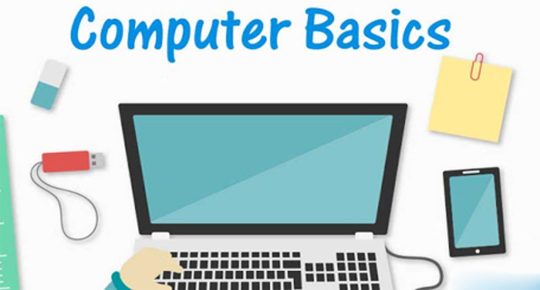
A basic computer course is designed to provide individuals with fundamental knowledge and skills to use a computer effectively for various tasks. These courses are suitable for beginners or those with limited experience with computers. Here's a typical course description:
Course Title: Basic Computer Skills
Course Overview:
This course is designed to introduce students to the essential concepts and skills required to use a computer confidently. Through a combination of lectures, hands-on exercises, and practical projects, students will learn how to navigate the Windows operating system, use common software applications, browse the internet safely, and manage digital files effectively.
Course Objectives:
Computer Fundamentals: Understand the basic components of a computer system, including hardware (CPU, memory, storage) and software (operating system, applications).
Operating System Navigation: Learn how to navigate the Windows operating system, including using the desktop, taskbar, Start menu, and file explorer to manage files and folders.
Word Processing: Develop skills in using word processing software (e.g., Microsoft Word) to create, format, edit, and save documents such as letters, resumes, and reports.
Spreadsheets: Gain proficiency in using spreadsheet software (e.g., Microsoft Excel) to organize data, perform calculations, create charts, and analyze information.
Internet Basics: Learn how to use a web browser (e.g., Google Chrome, Mozilla Firefox) to browse the internet safely, search for information, and navigate websites.
Email Communication: Understand the basics of email communication, including creating, sending, receiving, and managing emails using an email client (e.g., Gmail, Outlook).
Digital Citizenship and Safety: Develop awareness of online safety and security best practices, including protecting personal information, avoiding online scams, and recognizing phishing attempts.
Troubleshooting and Maintenance: Learn basic troubleshooting techniques to resolve common computer problems and perform routine maintenance tasks such as software updates and system backups.
Course Format:
Instructor-led lectures and demonstrations
Hands-on exercises and practical assignments
Group discussions and peer collaboration
Quizzes and assessments to gauge learning progress
Prerequisites:
No prior experience with computers is required. This course is open to individuals of all skill levels who wish to gain basic computer literacy.
Assessment:
Assessment will be based on attendance, participation in class activities, completion of assignments and projects, and performance on quizzes and exams.
Course Duration:
The course typically spans a duration of [insert duration], with classes held [insert frequency].
Upon Completion:
Upon successful completion of the course, students will receive a certificate of completion, demonstrating their proficiency in basic computer skills. Graduates will be equipped with the knowledge and confidence to use computers effectively in personal, academic, and professional settings.
0 notes
Text
animation course

Animation is the art of creating the illusion of movement through a series of still images or frames. It is a versatile medium used in various fields, including entertainment, education, advertising, and gaming. Here's a breakdown of animation and its key components:
Types of Animation:
Traditional Animation: Also known as hand-drawn animation, this involves creating each frame manually on paper or using digital drawing tablets.
Computer Animation: Computer-generated imagery (CGI) involves creating animations digitally using specialized software. This includes 2D animation, 3D animation, and motion graphics.
Stop Motion Animation: This technique involves capturing individual frames of real-world objects or puppets in different positions and then combining them to create the illusion of movement.
Motion Graphics: Motion graphics involve animating graphical elements such as text, shapes, and images to convey information or enhance visual storytelling.
Key Principles of Animation:
Timing and Spacing: The timing and spacing of movements between frames determine the speed and fluidity of animation.
Squash and Stretch: This principle adds realism and exaggeration to animated objects by deforming them to convey weight and flexibility.
Anticipation: Anticipation involves preparing the audience for an upcoming action by adding a brief movement or pose before the main action occurs.
Follow-through and Overlapping Action: These principles involve adding secondary movements to animate objects to make their motion appear more natural.
Appeal: Appeal refers to making characters and objects visually appealing and engaging to the audience.
Animation Process:
Storyboarding: Storyboarding is the process of creating a sequence of drawings or sketches to plan out the visual narrative of an animation.
Layout and Design: This stage involves designing the visual elements, characters, and backgrounds of the animation.
Animating: Animators create movement by manipulating characters, objects, and backgrounds using various techniques, such as frame-by-frame animation, rigging and animating 3D models, or manipulating digital puppets.
Rendering: Rendering involves processing the animated frames to produce the final video output.
Editing and Post-Production: Animators edit the rendered footage, add sound effects, music, and voiceovers, and make final adjustments to the animation.
Applications of Animation:
Entertainment: Animation is widely used in films, television shows, and video games to entertain audiences and tell engaging stories.
Education: Animated videos and interactive animations are used in educational settings to explain complex concepts, teach languages, and engage students.
Advertising and Marketing: Animation is used in advertising campaigns, product demonstrations, and promotional videos to grab attention and communicate messages effectively.
Simulation and Training: Animation is used in simulation and training programs for industries such as aviation, healthcare, and military to simulate real-world scenarios and train personnel.
Overall, animation is a powerful medium for storytelling, visual communication, and entertainment, offering endless creative possibilities for artists, filmmakers, educators, and businesses.
0 notes
Text
graphic designing course
ChatGPT
A basic computer typically refers to a standard personal computer (PC) that is designed for general-purpose use, such as web browsing, word processing, email, and multimedia consumption. Here's a breakdown of its key components and functionalities:
Central Processing Unit (CPU): The CPU is the brain of the computer, responsible for executing instructions and performing calculations. It processes data and controls the operation of other components.
Memory (RAM): Random Access Memory (RAM) is temporary storage that holds data and instructions for the CPU to access quickly. More RAM allows the computer to run multiple programs simultaneously without slowing down.
Storage (Hard Drive or SSD): Storage devices such as hard disk drives (HDDs) or solid-state drives (SSDs) store data, including the operating system, programs, documents, and multimedia files. SSDs offer faster performance than HDDs due to their lack of moving parts.
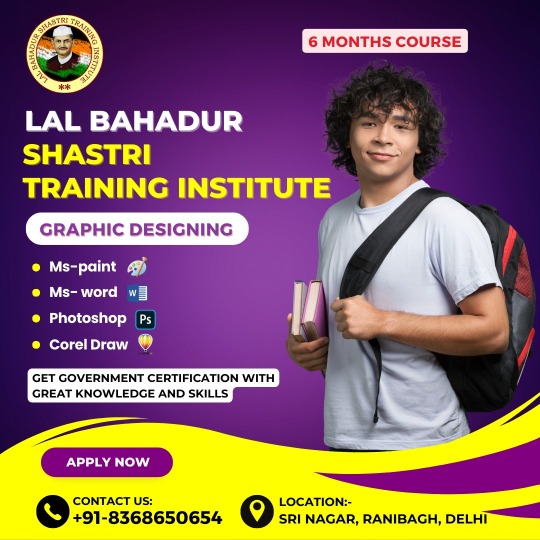
0 notes
Text
digital marketing course
Digital marketing encompasses all marketing efforts that utilize electronic devices or the internet. It's a dynamic field that leverages digital channels such as search engines, social media, email, websites, and mobile apps to connect with current and prospective customers. Here's a breakdown of some key components of digital marketing:
Search Engine Optimization (SEO): SEO involves optimizing a website to improve its visibility and ranking in search engine results pages (SERPs). This is achieved through various strategies such as keyword research, content creation, on-page optimization, and link building.
Content Marketing: Content marketing focuses on creating and distributing valuable, relevant, and consistent content to attract and engage a target audience. This can include blog posts, articles, videos, infographics, ebooks, and more.
Social Media Marketing: Social media marketing involves using social media platforms like Facebook, Twitter, Instagram, LinkedIn, and others to promote products or services, build brand awareness, and engage with customers. It includes both organic (unpaid) and paid strategies.
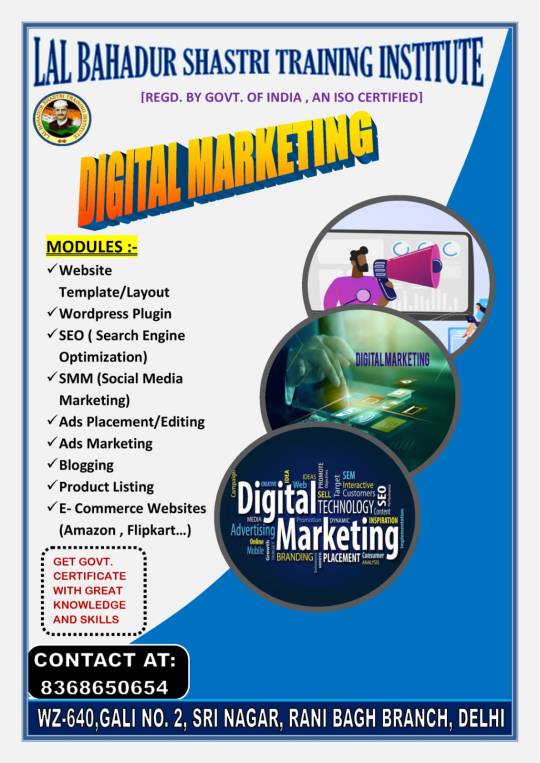
0 notes
Text
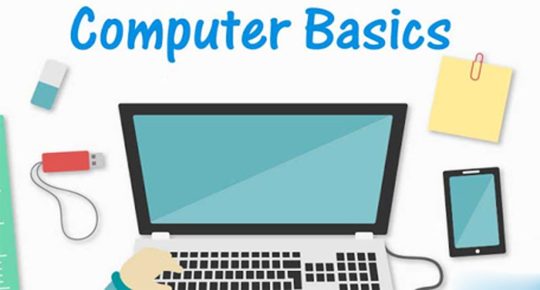
#basic computer course#basic computer course in hindi#computer basics#computer course#basic computer full course#basic computer#basic computer course for beginners#computer course in hindi#computer basic course#computer class#basic computer course in bangla#basic computer knowledge#computer#computer course basic#basic computer course 2020#computer basic course in nepali#basic computer skills#computer basic knowledge#computer basic
0 notes
Text
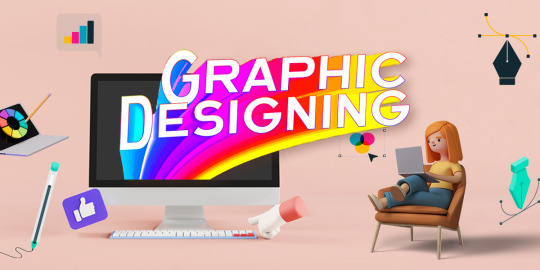
#graphic design full course#graphic design#graphic design course#graphic designer#how to become a graphic designer#graphic designing course#complete graphic design course#graphic design courses#graphic design tutorials for beginners#graphic design for beginners#graphic design principles#graphic design tutorial#learn graphic design#graphic designing#full graphic design course#free graphic design course#graphic design free course#how to be a graphic designer
0 notes
Text

0 notes
Text

0 notes
Text
E accounting course

#Accounting#accountingservices#accountinglife#accountingsoftware#accountingmajor#accountingmemes#accountingsystem#accountingtutor#accountingfirm#accountinghubng#accountinghub#accountingandfinance#AccountingClass#accountingplanning#accountingstudent#accountingsolutions#accountingstartup#accountingcoach#accountingtips#accountingproblems#accountingservice#accountingmiami#accountinglive#accountingoffice#accountingteam#accountingterms#accountingmanager#accountingjobs#accountingservicesofnyinc#accountingdepartment
0 notes
